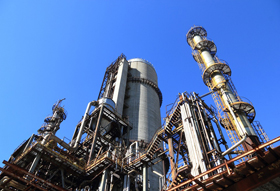
Polyurethane foam history, manufacture and testing

Polyurethane foam has been around for over 80 years, which means that it has firmly established itself as the most versatile and customisable foam material. Initially pioneered by a chemical reaction of polyols and isocyanates in 1937, polyurethane foam now dominates the industry with over 725,000 tonnes being produced each year in the US alone.
With this rate of production comes a meticulous manufacturing process for the production of polyurethanes. The liquid components that make up the product are poured onto a conveyor belt and immediately undergo a reaction that transforms the chemicals into a familiar foam-like material in a shape known as a slabstock. It is at this stage that manufacturers can create various types of moulds that enable for the production of specialist foam shapes and components that range in dimension. Furthermore, certain additives that yield desired foam properties are also included at this stage, ranging from flame retardants to waterproof chemicals.

In addition to giving products a range of material characteristics, polyurethane foam can also undergo a range of additional processes towards the end of the manufacturing cycle to alter its structure and performance. If not initially created in the desired shape through the use of a mould, the foam product can be shaped using lasers, water jets, hot wires and a range of cutters. In specialist cases, such as the creation of "convoluted foam" for example, the foam undergoes a range of compression processes to develop the required "egg box" shape. However, for more complex reformations of foam, polyurethane is frequently combined with other materials and fibres. It is through this reformulation process, using bonding processes like melting and powder laminating, that polyurethane foams can be significantly re-structured and have their characteristics transformed.
Such a longstanding history of polyurethane foam has only been achieved through the industry's consistent high-standards. To maintain the production of high-quality foam products, polyurethane foam has previously and continues to undergo a range of dynamic testing processes. This all starts with a basic "flex fatigue" test, whereby durability of the material is calculated through repetitive compressions and actions, before progressing to more complex tests such as "hysteresis", which measures how well a foam regains its original shape once misshapen. The range of tests are endless, ranging from roller shear and tear resistance, to resilience and airflow.
All in all, keeping standards high in the vast scale polyurethane industry is no mean feat, and without the creation of and support from various governing bodies, the landscape could be very different. Some regulatory bodies that safeguard the industry play specific roles, with the ASTM International board, for example, being commended for the resources it offers for standard testing procedures - including air flow, indentation/compression force deflection and resilience. In addition, all reputable foam manufacturers now produce products that adhere to ISO 9000 standards - a quality management assessment that ensures all foam produced meets both statutory and regulatory requirements.
At eFoam, we are passionate about upholding the high standards that exist in the polyurethane foam sector. For more information on any of the topics discussed above, please do email us at info@efoam.co.uk where one of our specialist advisers will be happy to chat further.

